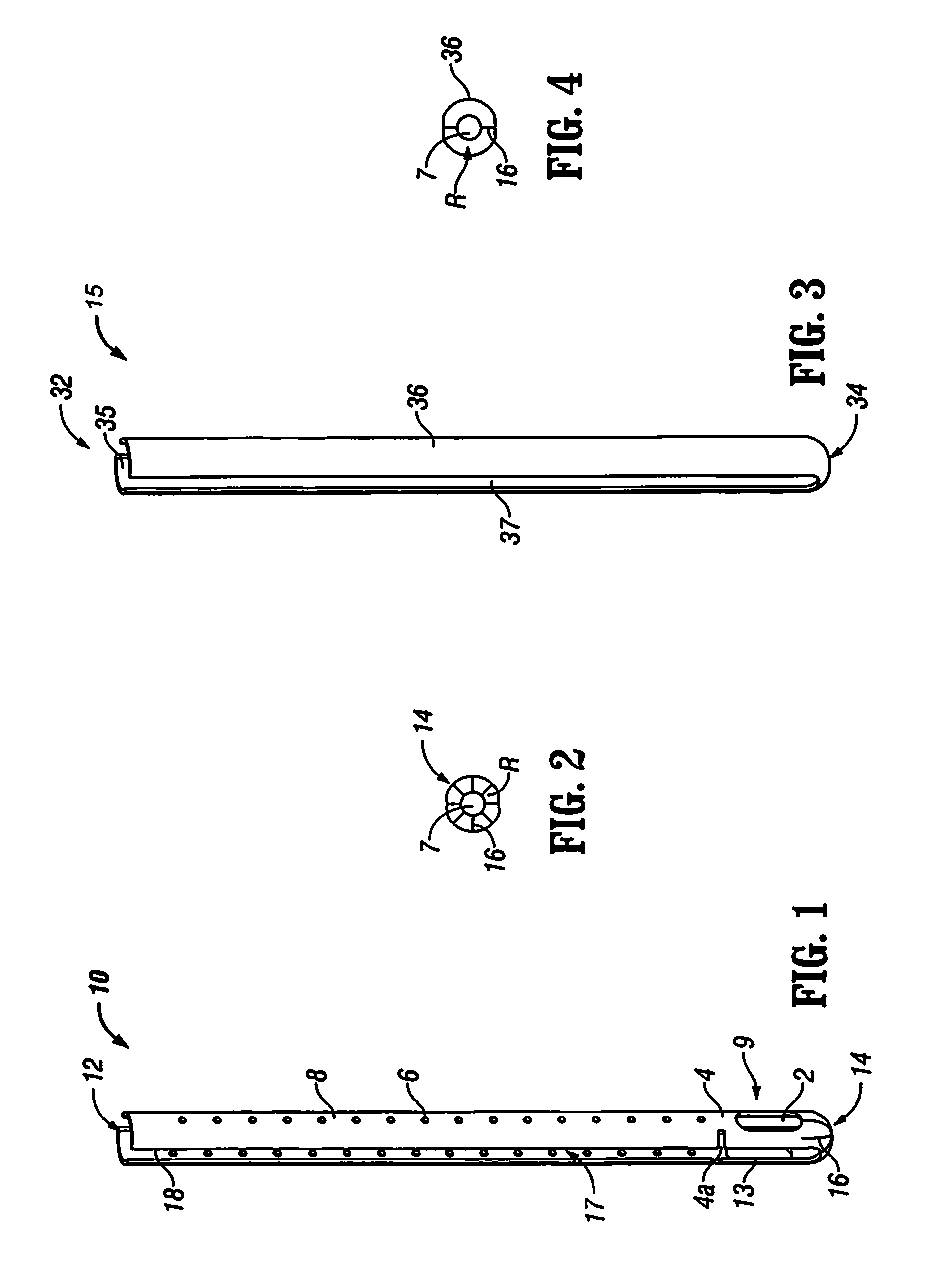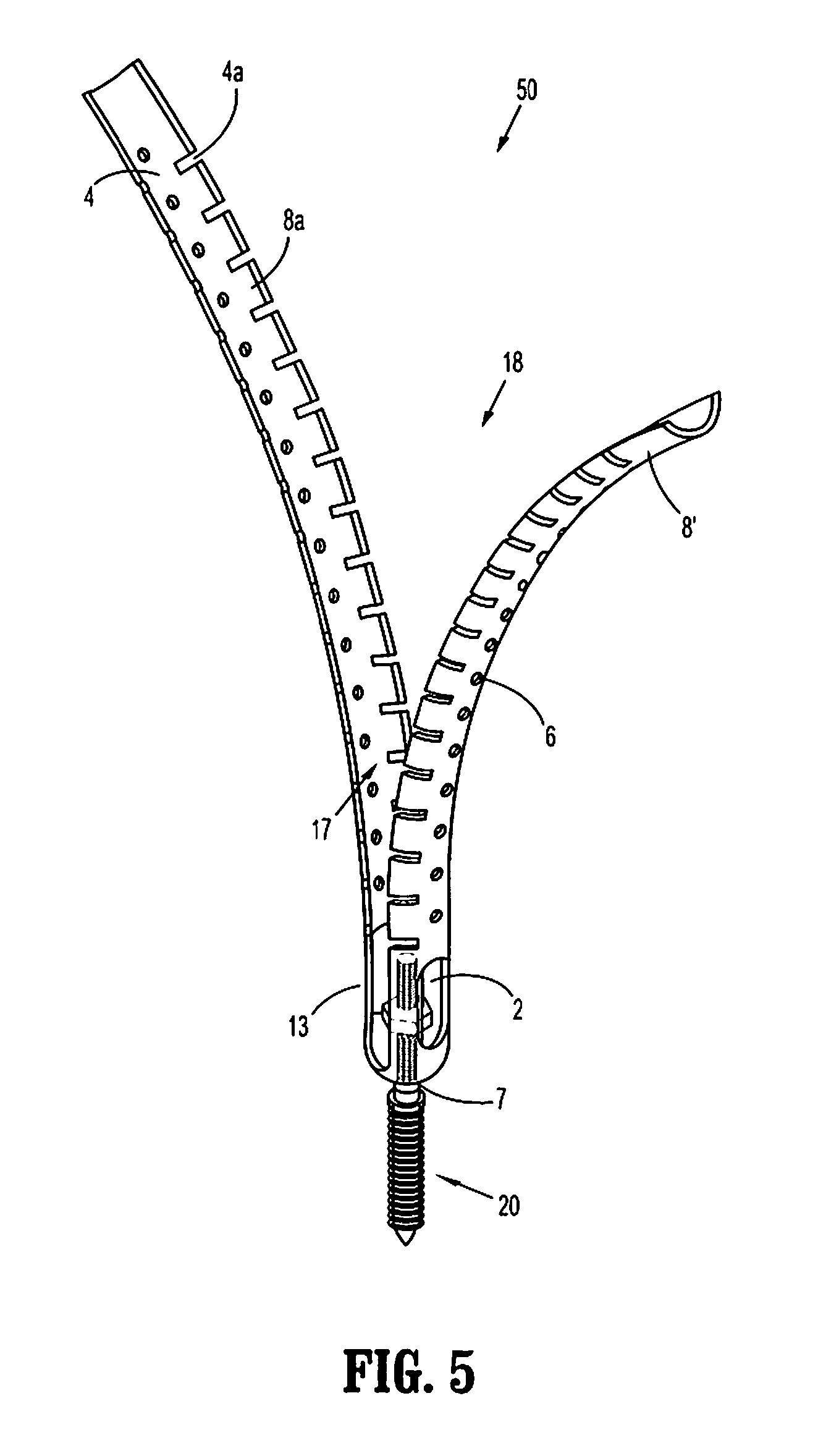Minimally invasive retractor and posted screw
a technology of retractor and post screw, which is applied in the field of orthopedic spine surgery, can solve the problems of cumbersome devices, unfavorable minimally invasive approaches, and poor adaptability of procedures, and achieve the effect of convenient further the retractor blade, and reliable securing of the screw
- Summary
- Abstract
- Description
- Claims
- Application Information
AI Technical Summary
Benefits of technology
Problems solved by technology
Method used
Image
Examples
first embodiment
[0062]Referring initially to FIGS. 1 and 2, the presently disclosed minimally invasive retractor is illustrated and generally designated as 10. Retractor 10 includes an open proximal end 12 and a distal end 14. In addition, retractor 10 includes a pair of retractor blades 8 having a plurality of instrument holes 6 disposed on each of retractor blades 8. Instrument holes 6 are configured and dimensioned to cooperate with different surgical instruments as will be discussed in detail hereinafter. A distal region 9 of retractor 10 includes an opening 7 (FIG. 2), at least one slot or window 2, and a pair of arms 13 extending from distal end 14 to a flexible region or living hinge 4. Window 2 is sized and configured to receive instruments therethrough. Each retractor blade 8 is attached to living hinge 4 to define a substantially continuous elongate member. A pair of recesses 4a is formed between retractor blade 8 and arm 13 to define living hinge 4.
[0063]Distal end 14 optionally may incl...
second embodiment
[0067]Referring now to FIGS. 3 and 4, the present disclosure is illustrated as retractor 15 having an open proximal end 32 and a distal end 34. Retractor 15 includes a pair of retractor blades 36. Similar to retractor 10, distal end 34 is adapted to mate with a threaded shank of a posted pedicle screw. Additionally, retractor 15 includes an opening 7 (FIG. 4) that is substantially identical to opening 7 of retractor 10. As in the previous embodiment, blades 36 have an arcuate configuration that is less than about 180° and are radially spaced apart to define a continuous slot 37 along a substantial portion of retractor 15.
[0068]Furthermore, retractor blades 36 define a passage 35 through retractor 15. In this embodiment, retractor blades 36 are also flexible, but bend radially outwards from a centerline of retractor 15 near relief regions R (FIG. 4). As in the previous embodiment, relief regions R defined by slits 16 (shown as a pair of slits in FIG. 4) as previously discussed in con...
PUM
 Login to View More
Login to View More Abstract
Description
Claims
Application Information
 Login to View More
Login to View More - R&D
- Intellectual Property
- Life Sciences
- Materials
- Tech Scout
- Unparalleled Data Quality
- Higher Quality Content
- 60% Fewer Hallucinations
Browse by: Latest US Patents, China's latest patents, Technical Efficacy Thesaurus, Application Domain, Technology Topic, Popular Technical Reports.
© 2025 PatSnap. All rights reserved.Legal|Privacy policy|Modern Slavery Act Transparency Statement|Sitemap|About US| Contact US: help@patsnap.com



